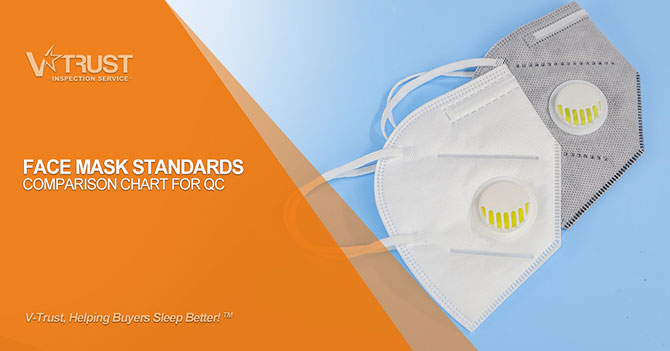Like many personal protective equipment, FFRs, short for Filtering Facepiece Respirators, and often referred to as disposable respirators, are also requested to undergo many regulatory requirements worldwide.
These requirements include national or regional standards that define safety, function and performance characteristics needed for respirators to assert compliance with the standards in question.
Health officials also point to such requirements when providing respirator guidelines during pandemic or disaster conditions.
This article’s purpose is to help clarify some of the main differences between such standards, in particular the following FFR output standards:
- N95 (United States NIOSH-42CFR84)
- FFP2 (Europe EN 149-2001)
- KN95 (China GB2626-2006)
- P2 (Australia/New Zealand AS/NZA 1716:2012)
- Korea 1st class (Korea KMOEL - 2017-64)
- DS (Japan JMHLW-Notification 214, 2018)
As seen in the following overview chart, respirators that met such standards can be assumed to have similar function, based on the performance specifications that were set out in the criteria and checked through compliance testing.

Though it is reasonable to consider these standards similar/equivalent to one another, buyers can review their relevant respiratory safety laws and specifications before choosing a respirator, or communicate with their local public health agencies for advice on what’s accepted in a particular country/region.
Definitions
- Filter performance – the filter is evaluated to measure the reduction in concentrations of specific aerosols in air that passes through the filter.
- Test agent - the aerosol that is generated during the filter performance test.
- Total inward leakage (TIL) – the amount of a specific aerosol that enters the tested respirator facepiece via both filter penetration and faceseal leakage, while a wearer performs a series of exercises in a test chamber.
- Inward leakage (IL) – the amount of a specific aerosol that enters the tested respirator facepiece, while a wearer performs a normal breathing for 3 minutes in a test chamber. The test aerosol size (count median diameter) is about 0.5 micro meter.
- Pressure drop – the resistance air is subjected to as it moves through a medium, such as a respirator filter.
V-Trust has a solid history in taking the right steps to make sure that you purchase products that comply with your market’s regulation.
To see a sample pre-shipment inspection report for face masks, please click the button bellow,
Feel free to contact us at info@v-trust.com for more information concerning our quality control services.
V-Trust Inspection Service
Helping Buyers Sleep Better TM




Discussion